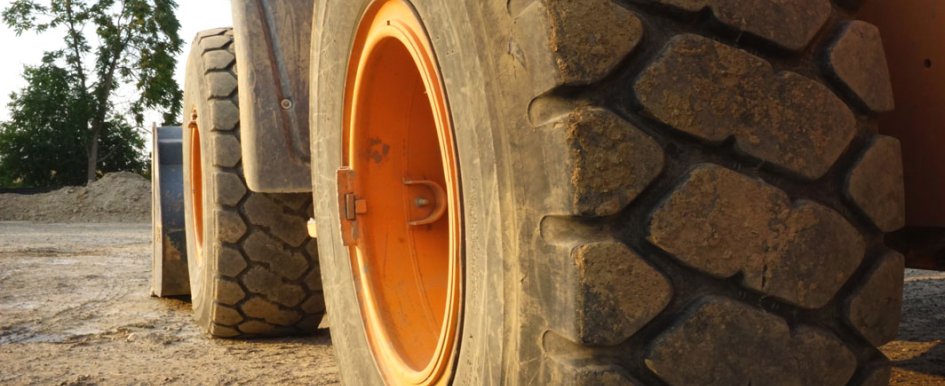
On-the-job safety in the construction field has captured headlines in recent months, with many statistics pointing to increased incidents of worksite injury. According to the Bureau of Labor Statistics (BLS), working in the transportation sector of the construction industry makes workers particularly vulnerable.
The BLS study concluded, “the transportation and material-moving occupational group and the construction and extraction occupational group accounted for 47% of worker deaths in 2017.” And within this overall occupational subset, “heavy and tractor-trailer truck drivers had the largest number of fatal occupational injuries with 840.”
Sadly, this figure represents the highest value for heavy and tractor-trailer truck drivers since the occupational series commenced in 2002. While the marketplace has taken this issue seriously and responded in kind—with additional measures to put injury prevention and awareness under a more prominent spotlight—the fact remains that ensuring the safety of construction workers and heavy-equipment operators in the field is still a challenge.
The increase in injury rates is likely endemic to broader growth within the industry. As construction grows on a global level to accommodate new building demands and the swell of commercial and residential development, so does the potential and risk for injury.
For every aspect of the construction, building and rental equipment sectors, effective and more reliable supporting technology and solutions to injury-proof the growing end-to-end workforce has become more important than ever.
While traditional prevention measures—such as greater education, new training programs and increased regulatory involvement—have been shown to have a measured level of effectiveness, there are certain improvements on a technological level that can directly move the needle in terms of enhanced worker and field operator protection.
When it comes to keeping construction equipment drivers and operators as safe as possible, companies can look to simple, cost-effective ways to shore up their transportation resources—and this includes taking a closer look at their overall road care and tire solutions to improve off-the-road (OTR) vehicle safety.
According to Grand View Research Inc., in a 2018 report on the size of the global construction equipment space, use of heavy construction vehicles was projected to only increase and “witness high demand from the infrastructure sector owing to rise in construction activities.”
Obviously, the equipment itself needs to be in safe operating form in all areas, receiving regular maintenance and technical checks and evaluations according to designated protocols. And these services are often subjective to the particular type of equipment and its application.
There is, however, one safety element that can be consistently deployed across construction fleets, and it revolves around tire technology selection. The use of tire-fill, or foam-fill, technology offers additional, often underrealized benefits related to worker and operator safety because of its vast tire flat-proofing capability.
Tire flats and blowouts present a major risk factor for transportation-related injuries on the job. The use of tire-fill technology, which injects polyurethane fill into pneumatic tires to generate a synthetic elastomer core, can help to reverse and mitigate this danger.
Pneumatic tires with polyurethane fill allow equipment to operate over broken glass, nails, sharp metals, rocks, rebar and other damaging objects, without the risk of puncture. With tire flat-proofing technology, OTR machinery can glide across this debris that would be extremely likely to cause immediate damage to air-filled tires.
Polyurethane is a highly suitable material for this application, and it has been proven to perform successfully in thousands of demanding applications for the construction and rental equipment markets. In addition to prevention of injury through the elimination of unanticipated tire flats, there are also other direct safety advantages of this technology.
While tire fill ensures that OTR vehicle tires won’t go flat, it also helps to deliver a smoother, safer ride that is far less physically distressing for drivers than riding on solid aperture tires. In the end, anything related to shock resistance, cushioning, stability and traction plays a key role in keeping OTR heavy equipment and operators safe. And tire selection plays an important role in this equation.
A few other reasons operators may want to consider choosing a tire-fill solution, now widely available from various manufacturers across the industry, as an alternative safety measure are as follows:
- There are less tip-overs due to sudden flats with flat-proofing technology.
- Tire fill provides better ballast for steep hillside jobs and unusual overload conditions.
- Tire fill eliminates the potential for tires or wheels to fail with explosive force, oftentimes due to loss of air pressure.
- Operators experience fewer bent wheels.
- There is typically less mechanical downtime from tire malfunction.
Tire fill also delivers a rubber softness of 8 durometers that is great for skid-steer applications, especially because this type of equipment does not have shocks, which negatively impacts both vehicle and operator safety. Fewer unanticipated flats translates to greater operator control.
Along with tire-fill technology, operators may also want to consider utilizing various tire safety-promoting conditioners and sealants. These products are designed for field managers who are seeking additional safety for their drivers while also looking to keep their productivity maximized. They include various solutions to protect wheels from corrosion, rust and weathering due to extreme elements; to extend overall tire and wheel life; and to provide durable, high-tenacity fiber tire sealants that offer superior protection.
Dangers exist everywhere on a busy construction job. Project managers understand that proper technology choices can truly make the difference between a safe jobsite and a perilous work environment.
And, when it comes to tire selection for OTR heavy equipment that is regularly exposed to the rigors of hazardous conditions, proper tire performance and flat-proofing are essential components of a successful and safe construction project.



